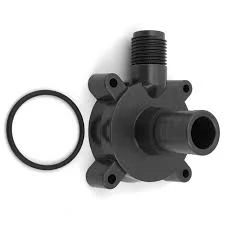Mobile:+86-311-808-126-83
Email:info@ydcastings.com
Understanding the Impact of Lost Foam Aluminum Casting on Manufacturing Efficiency and Quality
Understanding Lost PLA Aluminum Casting A Modern Approach to Metal Casting
In recent years, the manufacturing industry has witnessed a significant transformation driven by advancements in technology and innovative methods. Among these developments, lost PLA (Polylactic Acid) aluminum casting has emerged as a noteworthy technique that blends traditional metal casting with contemporary 3D printing practices. This article explores the fundamentals of lost PLA aluminum casting, its benefits, applications, and the future of this promising technique.
The Basics of Lost PLA Aluminum Casting
At its core, lost PLA aluminum casting is a combination of two processes 3D printing and metal casting. The process begins with creating a model of the desired object using PLA filament, which is biodegradable and derived from renewable resources like corn starch or sugarcane. The 3D printed PLA model serves as the pattern for the casting process.
Once the model is completed, it is coated with a ceramic shell, which provides the necessary strength to withstand the molten aluminum during casting. The next step involves heating the PLA model to melt it out, leaving behind a cavity in the shape of the desired part. This step is crucial, as it prevents any contamination or residual materials from impacting the integrity of the final metal casting.
With the PLA pattern removed, molten aluminum is poured into the ceramic shell, filling the cavity left by the 3D-printed mold. After the aluminum has cooled and solidified, the ceramic shell is broken away, revealing the finished aluminum casting.
Benefits of Lost PLA Aluminum Casting
1. Complex Geometries One of the standout advantages of lost PLA casting is its ability to produce intricate and complex shapes that would be difficult or impossible to achieve with traditional casting methods. This opens up new possibilities in terms of design and functionality for various applications.
2. Rapid Prototyping The use of 3D printing to create the PLA models allows for fast prototyping. Designers can quickly iterate designs and produce multiple versions of a part without the need for expensive and time-consuming tooling. This accelerates the development cycle and minimizes costs.
3. Material Efficiency The additive nature of 3D printing means that material is used only where necessary. This contrasts sharply with traditional subtractive manufacturing techniques, which often result in significant material waste. By minimizing waste and utilizing biodegradable materials, lost PLA aluminum casting is a more sustainable option.
lost pla aluminum casting

4. Customizability As consumer demand shifts toward personalized products, lost PLA aluminum casting caters to this trend by allowing for custom designs and one-off components. This capability is particularly valuable in industries such as aerospace, automotive, and medical devices, where tailor-made solutions are often required.
Applications of Lost PLA Aluminum Casting
The versatility of lost PLA aluminum casting has led to its adoption in various industries, including
1. Aerospace The aerospace sector often requires lightweight yet strong components. Lost PLA aluminum casting can produce complex geometries that reduce weight while maintaining structural integrity, making it suitable for critical aerospace applications.
2. Automotive In automotive manufacturing, this technique allows for the creation of intricate engine components and custom parts that enhance performance or reduce weight, contributing to overall fuel efficiency.
3. Art and Design Artists and designers are increasingly utilizing lost PLA casting to bring their creative visions to life in metal. The ability to produce unique and complex sculptures or decorative items has transformed the way art is conceived and crafted.
4. Medical Devices The medical industry, which often demands precision and bespoke solutions, benefits from the customization capabilities of lost PLA aluminum casting. Components can be tailored specifically to patient needs, enhancing both functionality and comfort.
The Future of Lost PLA Aluminum Casting
As technology continues to evolve, the future of lost PLA aluminum casting looks promising. Ongoing advancements in 3D printing materials and processes are expected to enhance the quality and precision of castings. Furthermore, the integration of digital tools that allow for better simulation and design validation will streamline production already made efficient by this method.
In conclusion, lost PLA aluminum casting represents a frontier in modern manufacturing, merging the worlds of 3D printing and metal casting. Its unique benefits, including the ability to create complex geometries, rapid prototyping, and the potential for customization, position it as a valuable technique for various industries. As we continue to embrace innovative methods, lost PLA casting could transform traditional practices, leading to more sustainable and efficient manufacturing processes.
-
Impeller Technology That Powers Precision in Pump SystemsNewsMay.22,2025
-
Valve Durability Begins with Quality Cast Iron ComponentsNewsMay.22,2025
-
Performance Cooling with Advanced Automobile Water Pump SolutionsNewsMay.22,2025
-
How Motor Housing and Oil Pans Shape Engine PerformanceNewsMay.22,2025
-
How Metal Castings Drive Modern Manufacturing EfficiencyNewsMay.22,2025
-
Exploring the Engineering Behind Valve Body CastingsNewsMay.22,2025











